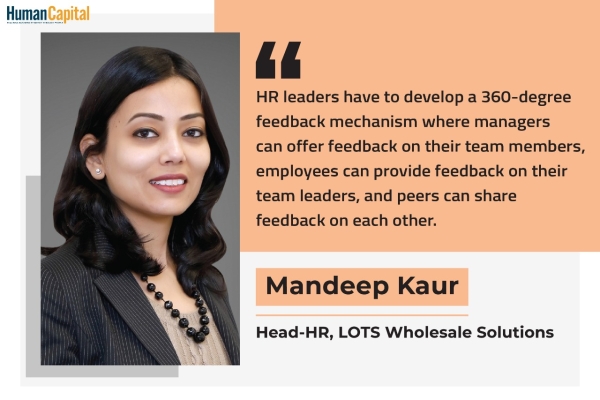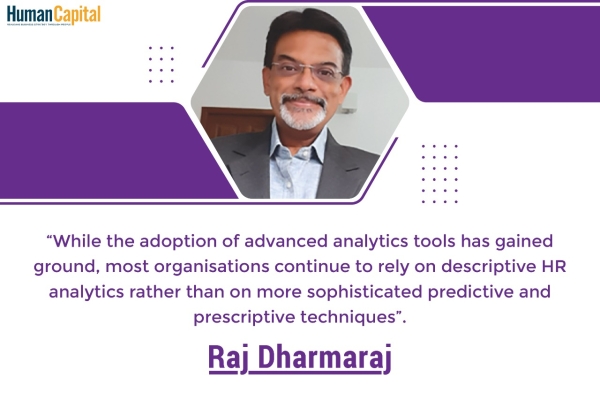Organisations must rethink Performance Management to improve employee engagement and keep pace with the changing work scenario.
I am sure that most of my colleagues from the HR fraternity will concur hands down when I say that the Performance Management process as we know it is outdated. Over the years, the system has merely become a routine annual exercise undertaken by the HR department to appraise employees and find a justifiable reason to give one person a certain amount of raise and another with another raise. Performance Management became some kind of annual exam that was met with dread and apprehension, and, along the way garnered hatred for the HR function as a whole. It hurt employee engagement, morale, productivity, and, ultimately, business growth, and has managed to stress out business and HR leaders.
If Performance Management is the cause of so much anxiety, how can it benefit the organisation? The good news is that forward-thinking companies are reimagining Performance Management. They are taking up the mantle to change this pessimistic view of Performance Management and turn it into a productive and effective process. They are bringing in innovative solutions that are result-oriented and ensure that Performance Management accomplishes what it was always meant to – improving employee performance, and therefore, organisational productivity.
What are some of the latest trends?
New-age companies such as Google, Twitter, Intel, LinkedIn, Spotify, Airbnb and many others are phasing out the traditional approach to Performance Management. They have realised that what businesses have been using for decades is no longer relevant in today’s dynamic work environment. While organisations have relied on Performance Management systems such as Key Performance Indicators (KPIs) so far, they are today ineffective, time-consuming and de-motivating.
So, what are they doing instead? Pioneered by Intel and then emulated by other progressive companies, businesses are looking to Objectives and Key Results (OKRs) as the next step in the evolution of Performance Management.
The genesis of OKR came from Intel and then was quickly adopted by other companies in Silicon Valley. It was embraced by Google in the very first year in 1999. This essentially means that Google had no baggage of traditional performance indicators and started on the right foot more than two decades ago with OKR. What started as a 40-employee company is today one of the most desired companies to work for, with a strength of more than 135,000 employees. So, did taking the OKR approach work for Google? Absolutely! It, in fact, played a key role in catapulting its growth!
Difference between the two approaches
There are two key differences between the traditional method of KPI and the new-age approach of OKR. The first is the intention behind setting a particular goal, and the second is the manner in which the company measures its achievement.
KPI appraises performance over time and evaluates the success of a particular initiative. So, it can be said that KPI goals are aligned with the result of a process or a project already in motion. OKR, on the other hand, is more aggressive in nature. It is a more agile and ongoing process. Here the goals are regularly set, tracked as the project progresses, and often revisited to pivot if needed. The main aim of OKR is to ensure that the organisation works like a well-oiled machine and that everyone is going in the same direction and working towards the same business objectives.
The second difference is how performance is measured. With KPIs, an employee’s performance or a project is calculated once a year. The results are obtained when they may no longer be relevant. Think about it. A project completed in the first quarter of the year is evaluated at the end of the year. The insights gained can no longer help improve the outcome of the said project or enable an employee to perform better. The lessons learned may prove to be useful in the future, but it is still a lost opportunity.
Now let us take a closer look at OKR. The goals in OKR are re-evaluated frequently, most often quarterly. If the goals still make sense, great. If they do not, they are tweaked. OKR is a swift and straightforward process that engages every team and aligns them with the overall company vision to ensure goals are effectively met.
Re-envisioning Performance Management
Businesses should not be hesitant to let go of what worked in the past. The pandemic pushed existing and new companies to start working remotely almost overnight. This was incomprehensible before it actually happened. Similarly, the move to digital transformation was slow and painful in the past few years. While businesses knew they had to do it, they were apprehensive to adopt new ways of working. The pandemic expedited this process and did not leave much room for choice. The point I am trying to drive home here is that the last two years have taught us that change is both necessary and beneficial to organisational growth and development. Do not let your fear stop you from embracing this new approach to Performance Management. While it may mean disrupting the existing processes, the exciting part is that it will only help you write your company’s success story!
Reimagining Performance Management
Let us now dive into how you can re-imagine Performance Management for your organisation:
Define flexible goals: Employees must have well-defined goals. In the absence of goals, they do not have anything specific to work for. Without goals, there are just desires, and wish lists; not everyone will be self-motivated enough to achieve their desires; having said that goals should not be set in stone. There should be room to tweak or alter them and align them keeping in mind the company’s goals. Instead of having a top-down approach to setting goals annually, they should be allowed to be tailored to meet changing market demands, customer expectations and the company’s growth path.
Leave feelings out: This has to be said. However hard a leader may try, there tends to be an element of bias in performance evaluations. It is only natural as we are emotional beings. But it is best if feelings are left out of performance evaluations. In order to ensure that performance evaluations are unbiased and fair, it is advisable to rely on data. Businesses and people go through many changes in the course of a year and it is imperative to take a fact-based approach. Businesses should leverage a reliable technology platform that collates and analyses data on the performance of people, teams and projects. Organisations should then use these insights to ensure fair performance evaluation of all employees.
Develop a 360-degree feedback mechanism: It is vital to have a well-rounded view of how projects are run, and people are treated. This is why HR leaders have to develop a 360-degree feedback mechanism where managers can offer feedback on their team members, employees can provide feedback on their team leaders, and peers can share feedback on each other. Moreover, it is way more effective when there is informal communication between managers and team members as it gives them a chance to check in more frequently, share advice, discuss priorities and ensure goals are aligned. It helps develop trust, creates a better bond and motivates employees to perform better as they know that the company is invested in their personal growth.
Remove the link between performance and compensation: Conventionally, performance reviews have been linked with compensation. It has determined whether an employee was given a 5% or a 20% raise. If they perform well, they can be paid more. If their performance is weak, then they would get a lower compensation. For this reason alone, employees see performance evaluation with absolute trepidation. Numerous cognitive and behavioural studies have shown that this approach does not necessarily motivate employees to perform better, but only end up demoralising them. Hence, it is imperative that organisations delink performance evaluation and compensation.
Adopt digitisation and automation: It is critical that businesses integrate technology in their Performance Management process. Banking on leading-edge technologies such as Big Data, Artificial Intelligence and Machine Learning can help business and HR leaders gain accurate insights into employee performance and ensure fair evaluations. It can also make Performance Management more efficient and effective. Automation can help them gather data systematically and ensure it is recent and relevant. It can also free the manager’s time to take up more mission-critical tasks rather than gathering data and making sense of it.
The bottom line is to grow, businesses have to adapt and constantly evolve. It is that simple! With the world around us fast-changing, companies can no longer be stuck to the traditional ways of doing business. What worked in the past may no longer work. Enterprises have to stop ticking the annual appraisal box and come up with more innovative and effective ways of measuring performance, uplifting employees and driving business growth.
A business can only achieve what it set out to if the employees know and understand its ultimate purpose. Only then can they work cohesively and align their efforts with these clearly defined goals. As businesses pivot and their models change, they must also take their Performance Management processes to the next level. As we step foot into another new year, it is high time businesses start reinventing their Performance Management. After all, the future is here!
Has COVID-19 forever changed the way we live and work?
Trending
-
SBI General Insurance Launches Digital Health Campaign
-
CredR Rolls Out 'Life Happens' Leave For Its Employees
-
Meesho Announces 30-Week Gender-Neutral Parental Leave Policy
-
Microsoft Unveils Tech Resilience Curriculum To Foster An Inclusive Future
-
60% Indian Professionals Looking For Job Change Due To COVID: Survey
-
SpringPeople And Siemens Collaborate For Digital Transformation Push
-
86% Professionals Believe Hybrid Work Is Essential For Work Life Balance: Report
-
Almost 1 In Every 3 People's Personal Life Affected Due To Work Stress
-
Meesho Rolls Out Reset And Recharge Policy For Employees
-
80% Of Talent Leaders & Academics Say Pandemic Changed Skill Needs For Youth: Report
-
Hero Electric Rolls Out 'Hero Care' Program For Employees
-
Human Capital In Collaboration With ASSOCHAM Hosts Virtual Conference
-
IKEA India, Tata STRIVE Collaborate To Create Employability And Entrepreneurship Opportunities
-
SAP India, Microsoft Launch Tech Skilling Program for Young Women
-
DXC Technology, NASSCOM Collaborate For Employability Skills Program
-
Lenskart To Hire Over 2000 Employees Across India By 2022
-
Mindtree Launches Learn-and-Earn Program
-
Tata AIA Extends 'Raksha Ka Teeka' To Its Employees
-
Swadesh Behera Is The New CPO Of Titan
-
NetConnect Global Plans To Recruit 5000 Tech Professionals In India
-
Hubhopper Plans To Hire 60% Of Indian Podcasters By 2022
-
Corporate India Needs More Women In Leadership Roles: Report
-
Aon to Invest $30 Million and Create 10,000 Apprenticeships by 2030
-
Tech Mahindra Launches ‘Gift a Career’ Initiative for Upskilling of Youth
-
40% Women Prefer Flexible Working Options in Post-COVID World: Survey
-
3 out of 4 companies believe they can effectively hire employees virtually: Report
-
Vodafone , CGI and NASSCOM Foundation launch digital skills platform
-
Odisha: Bank, postal employees to deliver cash for elderly, differently-abled persons
-
Skill India launches AI-based digital platform for "Skilled Workforce"
-
Hiring activity declines 6.73% in first quarter: Survey
-
70% startups impacted by COVID-19 pandemic
-
Bajaj Allianz Life ropes in Santanu Banerjee as CHRO
-
Over 70 Percent MSMEs look at cutting jobs to sustain businesses
-
93 Per Cent employees stressed about returning to office post-lockdown
-
Johnson & Johnson India announces family benefits for same gender partners
-
Indian firms turning friendly towards working mothers
-
Welspun India names Rajendra Mehta as new CHRO
-
Wipro partners with NASSCOM to launch Future Skills platform



Human Capital is niche media organisation for HR and Corporate. Our aim is to create an outstanding user experience for all our clients, readers, employers and employees through inspiring, industry-leading content pieces in the form of case studies, analysis, expert reports, authored articles and blogs. We cover topics such as talent acquisition, learning and development, diversity and inclusion, leadership, compensation, recruitment and many more.
Subscribe Now












































Comment